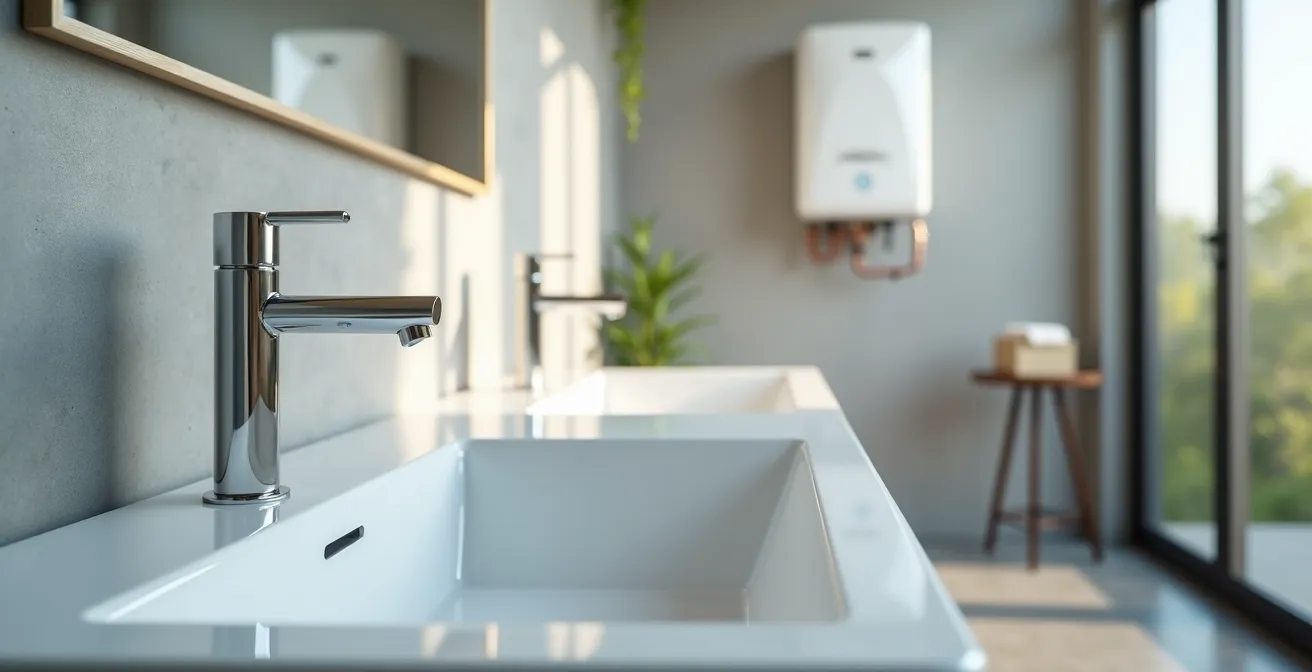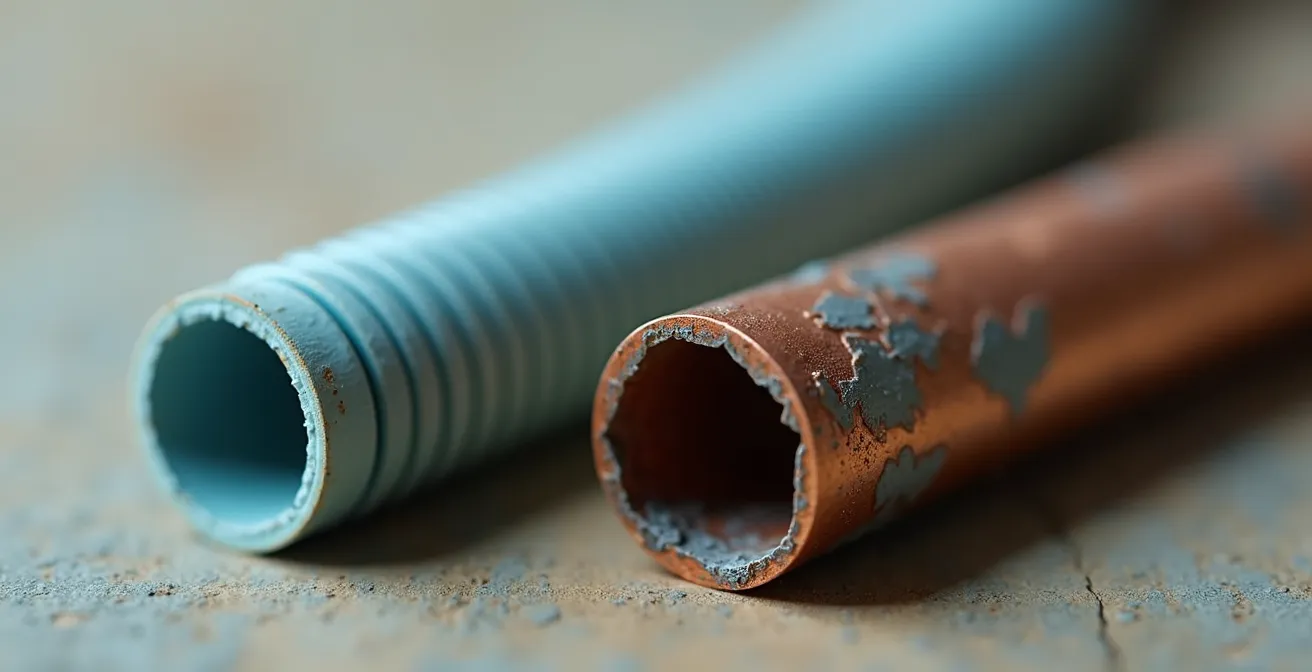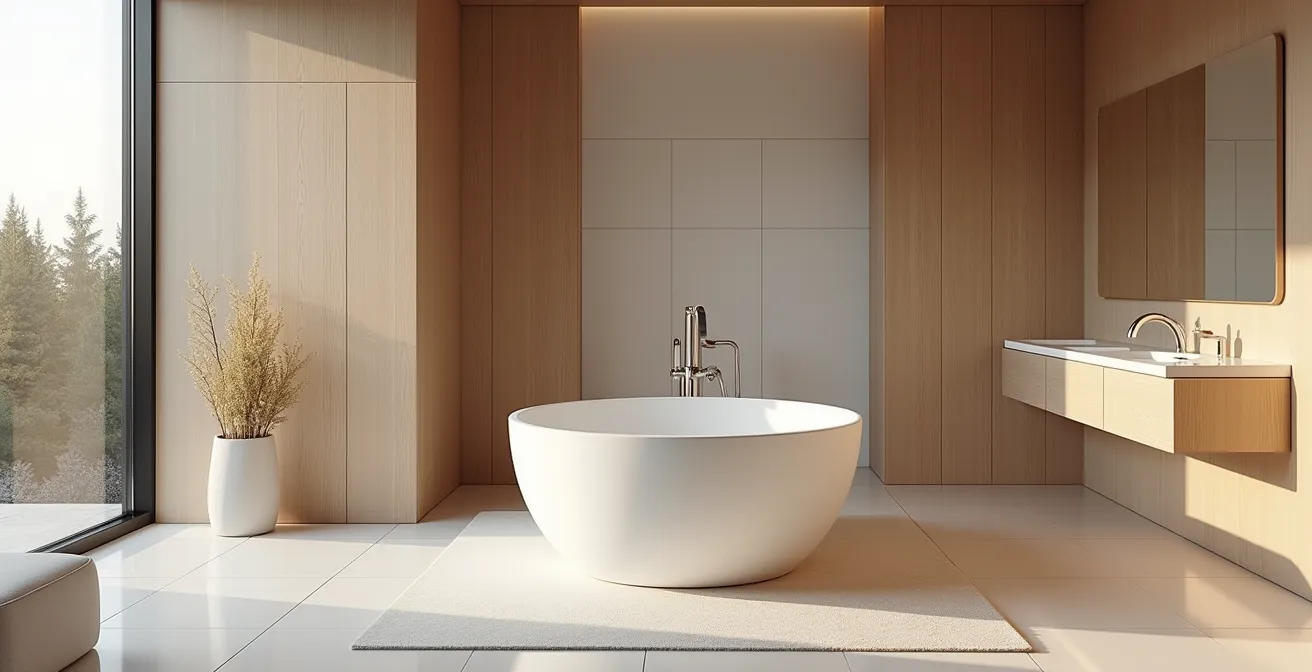
A successful home renovation hinges on smart decisions that enhance both lifestyle and property value. While kitchens and bathrooms often take the spotlight, the underlying plumbing network is a critical asset that can make or break your return on investment. The most effective strategy goes beyond surface-level aesthetics, balancing the immediate appeal of visible fixtures with the long-term security of a robust, efficient hidden infrastructure.
Focusing solely on shiny faucets while ignoring aging pipes is a common oversight. A truly valuable upgrade harmonizes form and function, ensuring the home is not only beautiful but also reliable for years to come. Making informed choices about where to invest requires a clear understanding of your goals and when to rely on professional plumbing solutions for complex installations, like arbuckleplumbingsolutions.com. This approach transforms your plumbing from a mere utility into a powerful driver of home value.
Your plumbing renovation blueprint
- Prioritize for ROI: Distinguish between upgrades for immediate resale value and those for long-term efficiency.
- Balance the Visible and Invisible: Combine aesthetic fixtures with foundational pipe and system upgrades for maximum impact.
- Know Your Limits: Understand which tasks are suitable for DIY and when professional installation is essential for safety and quality.
Strategic plumbing upgrade selection: Maximizing ROI for your renovation goals
Every renovation budget has its limits, making strategic prioritization essential. The key is to align your plumbing upgrades with your primary objective: are you enhancing the home for your own long-term comfort and efficiency, or are you maximizing its appeal for a quick and profitable sale? The answer dictates where you should focus your investment for the best possible outcome.
To help guide this decision, it’s useful to categorize improvements into two distinct groups: “visible” and “invisible.” Visible upgrades, such as new bathroom fixtures and modern faucets, offer immediate aesthetic impact and curb appeal. Invisible upgrades, like repiping or installing a new water heater, provide foundational reliability and long-term savings, which are powerful selling points for savvy buyers. While the average ROI for home renovations is around 70%, the specific choices you make can significantly influence that figure.
What’s the best way to prioritize plumbing upgrades?
First, define your primary goal (resale vs. personal comfort). Then, categorize potential upgrades into “visible” projects for immediate aesthetic appeal and “invisible” projects for long-term system reliability to create a balanced investment plan.
The following table provides a clear comparison to help you weigh your options based on their typical return and primary benefit.
| Upgrade Category | Examples | ROI Range | Primary Benefit |
|---|---|---|---|
| Visible | Fixtures, Faucets, Bathrooms | 30%-70% | Immediate aesthetic and resale appeal |
| Invisible | Piping, Water Heaters, Filtration Systems | Long-term savings and reliability | Long-term savings and reliability |
To put this strategy into practice, a systematic approach is most effective. Start by clearly defining your renovation’s main purpose and then assess the current state of your plumbing to identify any pressing needs.
Steps to prioritize plumbing upgrades
- Identify your primary goal: resale value vs. long-term efficiency.
- Assess current plumbing system condition and age.
- List desired visible upgrades for immediate appeal.
- Plan for invisible upgrades to improve system longevity and utility savings.
Projects that add functional space and square footage tend to offer the best return on investment.
– RenoFi Renovation Experts, RenoFi Cost vs. Value Report 2023
The silent value proposition: How invisible plumbing enhances home appeal and inspection readiness
While new countertops and flooring capture a buyer’s imagination, the unseen plumbing system is what secures their confidence. An outdated or failing plumbing network can be a major red flag during a home inspection, potentially derailing a sale or forcing significant price concessions. Investing in these “invisible” upgrades is a proactive measure that adds silent yet substantial value to your property.
One of the most impactful invisible upgrades is repiping with modern materials. Replacing old, corroded pipes with PEX or new copper not only prevents leaks but also improves water pressure and quality, ensuring the system’s longevity. The choice of material can also yield significant benefits during the renovation process itself, with PEX offering a 50% installation time reduction compared to copper, which translates to labor savings.
The visual contrast between modern and outdated piping materials starkly illustrates the benefits of an upgrade, highlighting issues like corrosion that can affect water quality and flow.

This modernization enhances not just the home’s mechanics but also its health and environmental profile, a growing concern for many buyers.
Lifecycle and Health Impact Assessment of PEX Versus Copper Plumbing
A comprehensive environmental and economic life cycle assessment found PEX piping significantly reduces health and environmental impacts compared to copper, including less carbon footprint and improved water quality.
Another high-value invisible upgrade is the tankless water heater. These units appeal to modern, eco-conscious buyers by providing on-demand hot water, which reduces energy waste. Their compact, space-saving design is an additional advantage, freeing up valuable square footage in utility closets or basements.
Switching from copper piping to PEX piping improves human health impact substantially and offers significant labor savings.
– David Nickelson and Kate Olinger, The Superiority of PEX Over Copper for Plumbing Systems, GF Building Flow Solutions
Elevating functionality and aesthetics: Modern fixtures and bathroom renovations
Once the foundational plumbing is secure, focusing on visible fixtures can dramatically elevate your home’s style and functionality. Modern upgrades are designed to merge sophisticated aesthetics with impressive resource efficiency. High-impact changes like installing smart faucets, low-flow showerheads, and dual-flush toilets can lead to an up to 50% reduction in water use, a compelling feature for any homeowner.
Transforming a bathroom into a “spa-like” retreat is a popular renovation goal that directly involves thoughtful plumbing choices. Features like steam showers, jetted tubs, and multi-function shower systems create a luxurious experience that adds significant perceived value. As John Doron, Owner of Salt & Pepper Construction, notes, eco-friendly bathroom fixtures successfully blend cutting-edge efficiency with timeless design, enhancing both sustainability and property worth.
The right combination of fixtures and finishes can create an oasis of calm and luxury, making the bathroom a key selling point of the home.

Kitchens also benefit immensely from plumbing enhancements. Conveniences such as pot fillers over the stove, advanced sink systems with integrated workstations, and built-in water filtration units add a layer of modern convenience that enhances daily life and boosts the home’s overall appeal. These thoughtful touches show a commitment to quality that resonates with potential buyers. For homeowners considering these enhancements alongside other major improvements, a holistic view is crucial when upgrading essential home systems.
Features checklist for modern kitchen and bathroom plumbing upgrades
- Install smart faucets with touchless operation and flow control.
- Upgrade to low-flow showerheads and dual-flush toilets to conserve water.
- Incorporate steam showers and jetted tubs for spa-like experience.
- Add pot fillers and integrated water filtration systems in kitchen.
Key takeaways
- A successful plumbing renovation balances visible fixtures for aesthetic appeal with invisible system upgrades for long-term reliability.
- Prioritize upgrades based on your primary goal, whether it’s maximizing immediate resale value or enhancing long-term comfort and efficiency.
- Modern materials like PEX piping and innovations like tankless water heaters offer significant improvements in efficiency, health, and value.
- While some minor tasks are DIY-friendly, complex plumbing work requires a licensed professional to ensure safety, compliance, and quality.
Navigating plumbing projects: DIY possibilities vs. essential professional installation
Deciding whether to tackle a plumbing project yourself or hire a professional is a critical choice that impacts your budget, safety, and the long-term integrity of your home. While some simple upgrades are well within the reach of a handy homeowner, more complex jobs carry significant risks that far outweigh potential savings. Recognizing your limits is key to a successful renovation.
Can I do my own plumbing in a renovation?
Simple tasks like replacing a faucet or unclogging a drain are often DIY-friendly. However, complex jobs like pipe replacement or water heater installation require a licensed professional to avoid safety risks and costly water damage.
Certain tasks are generally considered safe for DIYers with basic skills and the right tools. These projects typically involve minimal risk of major water damage and don’t require altering the existing pipe system.
DIY-friendly plumbing tasks
- Replace faucets and showerheads.
- Fix minor leaks.
- Unclog drains.
- Install simple water filters or aerators.
However, the allure of saving money can lead homeowners to underestimate the complexity of major plumbing work. Studies indicate that a significant number of plumbing failures are attributable to improper installation, with some reports suggesting around 35% of plumbing issues stemming from poor DIY installation. These errors can lead to disastrous consequences.
Cost and Damage Risks from DIY Plumbing Failures
Study shows that DIY plumbing errors can lead to significant water damage, mold growth, and voided insurance policies, emphasizing the need for professional intervention in complex jobs.
Hiring a licensed plumber is non-negotiable for tasks that involve soldering pipes, altering supply lines, or installing major appliances like water heaters and sump pumps. Professionals ensure the work is done correctly, adheres to local building codes, and is properly insured, protecting your investment. For any complex project, it’s wise to discover the benefits of hiring an expert to guarantee peace of mind and a flawless result.
Frequently asked questions on plumbing renovation tips
How much value does a new bathroom add to a home?
A bathroom renovation is a popular project with a solid return on investment. While the exact ROI can vary based on the scale of the project and market conditions, homeowners can typically expect to recoup between 50% and 70% of the cost upon resale. Focusing on modern, water-efficient fixtures and a clean, universal design provides the broadest appeal.
Is PEX piping really better than copper?
PEX offers several advantages over traditional copper. It is more flexible, which makes installation faster and less expensive. It’s also resistant to corrosion and scale buildup, which can improve water quality and flow over time. While copper remains a durable and reliable material, PEX is often preferred in modern renovations for its cost-effectiveness and versatility.
Are tankless water heaters worth the higher initial cost?
For many homeowners, yes. Although tankless water heaters have a higher upfront cost, they provide long-term savings through greater energy efficiency, as they only heat water on demand. They also have a longer lifespan than traditional tank heaters and their compact size frees up storage space, adding to their overall value proposition.